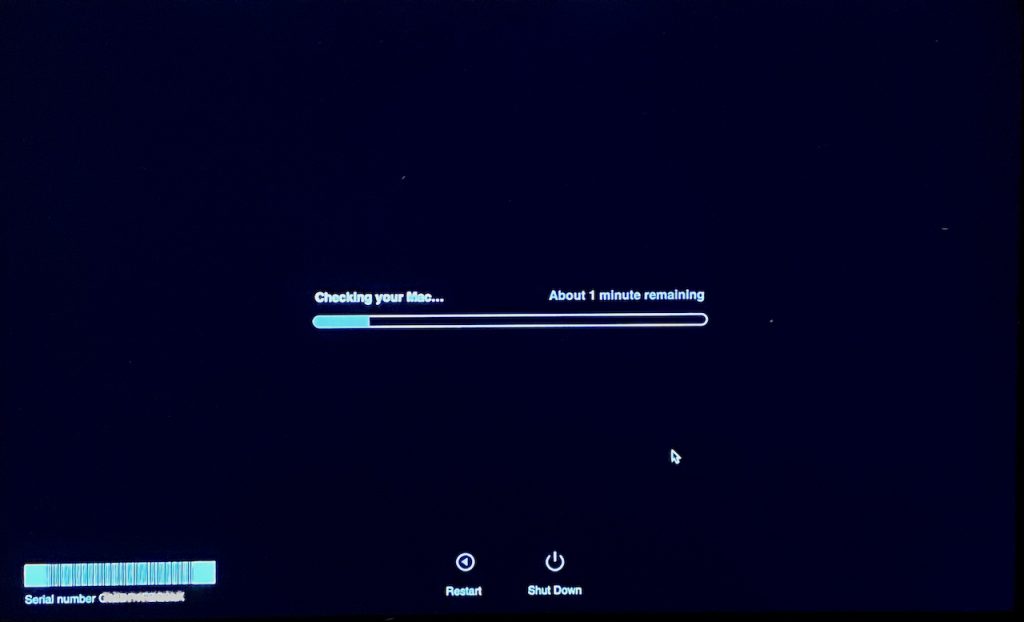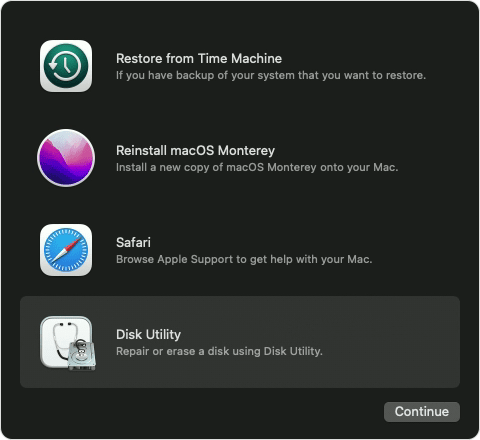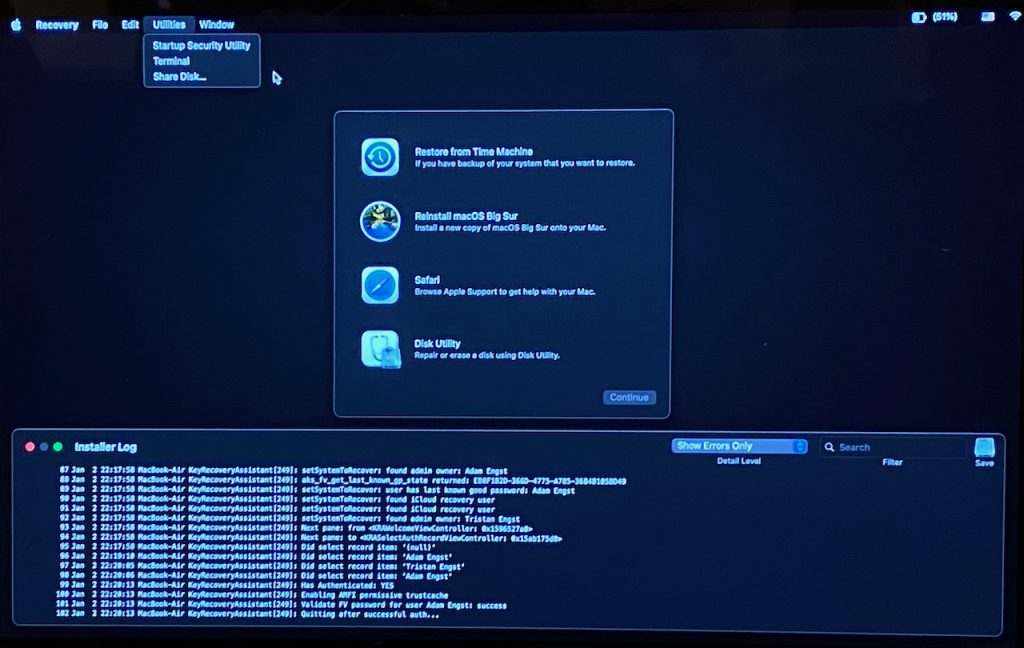
- #SELECT RECOVERY DISC MACBOOK PRO STARTUP MANAGER INSTALL#
- #SELECT RECOVERY DISC MACBOOK PRO STARTUP MANAGER FULL#
- #SELECT RECOVERY DISC MACBOOK PRO STARTUP MANAGER SOFTWARE#
- #SELECT RECOVERY DISC MACBOOK PRO STARTUP MANAGER MAC#
If you used Disk Utility from macOS Recovery, you can now restart your Mac: choose Apple menu > Restart. The order of repair in this example was Macintosh HD - Data, then Macintosh HD, then Container disk4, then APPLE SSD. Remember that you should be able to use option key at boot which invokes Startup Manager which lets you select the available boot volumes, including the Recovery partition (without downloading from the Internet). Keep moving up the list, running First Aid for each volume on the disk, then each container on the disk, then finally the disk itself. First Aid will run, checking the health of your Mac's drive. It should be the drive at the top of the sidebar if there are multiple drives.

#SELECT RECOVERY DISC MACBOOK PRO STARTUP MANAGER MAC#
Click on your Mac's startup drive in the Disk Utility sidebar. In case you don’t have one, we recommend using 4DDiG Mac Data recovery to recover all your Data for MacBook Pro.
#SELECT RECOVERY DISC MACBOOK PRO STARTUP MANAGER SOFTWARE#
#SELECT RECOVERY DISC MACBOOK PRO STARTUP MANAGER INSTALL#
Goal: clean Lion os install on one primary partition. If there is no Run button, click the Repair Disk button instead. Does not show Lion USB bootable flashdrive as option in startup manager (but does show up at startup disk).

In this example, the last volume on the disk is Macintosh HD - Data.Ĭlick Run to begin checking the selected volume for errors.
#SELECT RECOVERY DISC MACBOOK PRO STARTUP MANAGER FULL#
You may want to check out more Mac applications, such as Startup Disk Full Fixer, Disk Xray Lite or OS X Recovery Disk Assistant, which might be related to Apple Startup Disk. Our built-in antivirus scanned this Mac download and rated it as virus free. Select Recovery HD from the Startup Manager.For each disk that you're repairing, start by selecting the last volume on that disk, then click the First Aid button or tab. Our software library provides a free download of Apple Startup Disk 9.2 for Mac. To access OS X Recovery, reboot the computer while holding the Option key. When the OS X Recovery Disk Assistant completes, the new partition will not be visible in the Finder or Disk Utility. Insert an external drive, launch the OS X Recovery Disk Assistant, select the drive where you would like to install, and follow the on-screen instructions.

Overall performance of Mac improves with the tool as well. To create an external OS X Recovery, download the OS X Recovery Disk Assistant application. But when restarting the MacBook, holding down the option key, the USB doesnt show up. Startup Manager scans and detects unwanted startup apps, vulnerable files and browser plug-ins to save memory space and accelerate startup time. Note: In order to create an external OS X Recovery using the OS X Recovery Assistant, the Mac must have an existing Recovery HD. The OS X Recovery Disk Assistant lets you create OS X Recovery on an external drive that has all of the same capabilities as the built-in OS X Recovery: reinstall Lion or Mountain Lion, repair the disk using Disk Utility, restore from a Time Machine backup, or browse the web with Safari. Built right into OS X, OS X Recovery lets you repair disks or reinstall OS X without the need for a physical disc.


 0 kommentar(er)
0 kommentar(er)
